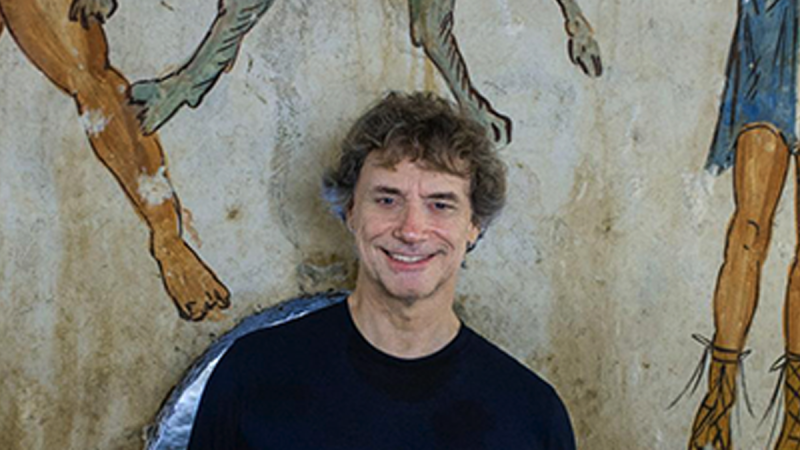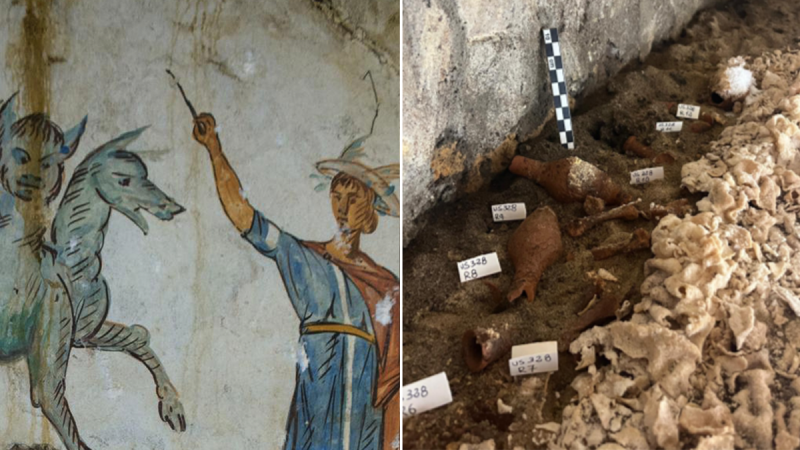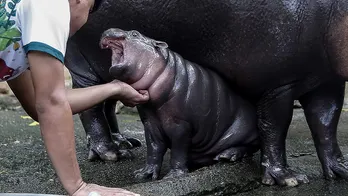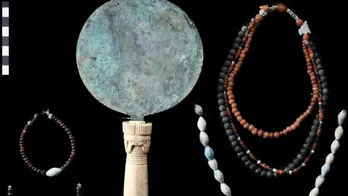Archaeologists unseal 2,000-year-old tomb, find mummy in 'excellent state'
Archaeologists were left surprised during an investigation inside the Tomba del Cerbero — a tomb located in Giugliano, Italy.
Following an inspection with a microcamera, experts discovered it was possible to physically open the unsealed 2,000-year-old stone coffin known as a sarcophagus.
This was the first time the contents of the tomb have been seen with human eyes following its discovery last year near Naples.
ARCHAEOLOGISTS DISCOVER UNDERWATER MOSAIC BELIEVED TO DATE BACK TO ROMAN EMPIRE
Once opened, they found a mummy in an "excellent state of conservation," according to a press release from the Superintendence Archaeology Fine Arts & Landscape for the Naples Metropolitan Area.

Archaeologists opened the Tomba del Cerbero in Giugliano, Italy, finding a 2,000-year-old mummy in a well-preserved condition. The experts also found medical supplies. Part of the tomb that was unsealed is pictured here. (Superintendence Archaeology Fine Arts & Landscape for the Naples Metropolitan Area)
The well-preserved remains of the body were found lying face-up covered by a shroud, which experts predict was mineralized to climatic conditions of the burial chamber.
For more Lifestyle articles, visit www.foxnews.com/lifestyle.
"The Tomb of Cerberus continues to provide valuable information on the Phlegraean territory near Liternum, expanding knowledge of the past, and, and offering opportunities for research also of a multidisciplinary nature" Mariano Nuzzo, superintendent of archaeology with the Italian Ministry of Culture, said in the press release.

The mummy was found "in excellent state of conservation of a supine inhumate, in a supine position," according to a press release from the Superintendence Archaeology Fine Arts & Landscape for the Naples Metropolitan Area. Alberto Angela, Italian paleontologist, is pictured near the exterior of the tomb. (Superintendence Archaeology Fine Arts & Landscape for the Naples Metropolitan Area)
The Phlegraean Fields is a large caldera volcano west of Naples, Italy.
Experts believe with the "particular care given" to the mummy, it may be the founder of the family for which the mausoleum was built.
CLICK HERE TO SIGN UP FOR OUR LIFESTYLE NEWSLETTER
The remains were surrounded by various ointments and a small metal tool used in Ancient Greece and Rome to clean the body before bathing.

Archaeologists, technicians, chemists and anthropologists, funded by the Ministry of Culture, will be continuing investigations and sampling activities. (Superintendence Archaeology Fine Arts & Landscape for the Naples Metropolitan Area)
"In recent months, in fact, laboratory analysis conducted on samples taken at the inhumates and depositional beds, in fact, they returned a considerable amount of data about the treatment of the body of the deceased and the funerary ritual put in place," Nuzzo added.
CLICK HERE TO GET THE FOX NEWS APP
Archaeologists, technicians, chemists and anthropologists, funded by the Ministry of Culture, will be continuing investigations and sampling activities.
Disclaimer: The copyright of this article belongs to the original author. Reposting this article is solely for the purpose of information dissemination and does not constitute any investment advice. If there is any infringement, please contact us immediately. We will make corrections or deletions as necessary. Thank you.







